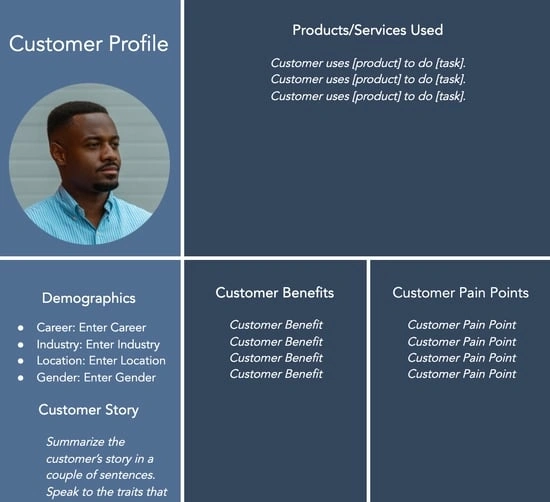How to profile your typical customer – StartupSmart

Bigcommerce was created after the two founders met in an online chat room. Four years on, the Aussie eCommerce start-up has secured $35 million in venture capital funding, built offices in Sydney and Texas and attracted 30,000 customers. Here, co-founder Eddie Machaalani passes on his top tips on customer profiling.
Most marketing plans fail because they don’t focus on anyone and try to attract everyone. As a result, companies are selling products that customers don’t want.
Sadly, most customers aren’t at the centre of the feedback loop. Sadder still, most customers will tell you what they want if you just ask.
In the first instalment of this series http://www.startupsmart.com.au/strategy/the-seven-marketing-steps-that-landed-us-with-30000-clients/201303119130.html my colleague and co-CEO Mitchell Harper presented a seven-step marketing plan that can almost certainly double your sales in 12 months and get you on your way to seven figures in revenue.
Those steps were:
- Create your typical customer profile
- Position your products to appeal to your ideal customer
- Spread the word to people who fit your typical customer profile
- Wow them immediately after buying
- Follow up with lots of free, useful stuff
- Ask for a (video) testimonial
- Repeat steps 3-6 infinitely
The first step of the plan: Create your typical customer profile
Obviously, this works best when you already have a few dozen customers, because you’ll be surveying your existing client base (no matter how small) to understand future buyers better.
Understand that this doesn’t have to be a costly process. There are free tools such as Google Docs and MailChimp that let you create a survey and mass email it easily and affordably.
Let’s say you sell customised sports apparel. Get into the heads of your customers with a survey that gives you information to help build a typical profile of someone who is likely to buy from you.
Useful information includes:
- Sex
- Age range
- Salary
- Marital status
- Job
- Hobbies
- How did they find you?
- Why did they buy from you?
- What problem did your product help them solve?
- Would they recommend you to a friend?
And so on. The results of this survey will let you literally write a profile of your typical customer. I mean really write it out. For example:
“John is 29 years old, has brown hair, green eyes, weighs 197 pounds and is 5 foot 11 inches tall. He lives in Melbourne with his wife and works in an office all day. He loves to watch the game with his buddies on weekends and found our website via a referral from a friend at work.”
“He bought from us because of our large selection of products, has recommended us to at least one friend and was happy with his purchase so would buy from us again. He also loves video games, playing poker and has a high school education.”
That makes your next step easier: Position your products to appeal to your typical customer
Put yourself in John’s shoes. Ask yourself, “If I were John, what would grab my attention and make me either sign up for information or buy something, instead of closing my web browser?”
Some ideas:
- An email newsletter about his favourite AFL team with little-known facts about players.
- A free shipping coupon that he can use on his first order.
- Photos or videos of other customers (who look and sound like John) wearing your product.
Remember, your goal is to become relatable to John. Anything and everything you write or display on your website, in your emails — any communication — must feel like it’s speaking directly to him.
You’re building a personal rapport with John (even though he’s a profile of a typical customer). That’s crucial, because people buy from people they know, like or respect.
Next time, we look at how to spread the word to people who fit your customer profile with some proven guerrilla marketing tactics.

